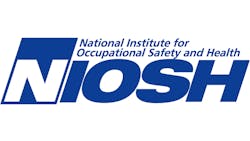Food Flavorings Causing Respiratory Illness in Production Workers
Respiratory illnesses account for about 2.5 percent of the total recordable illness distribution in food manufacturing, according to the Bureau of Labor Statistics.
As research is performed on the effects on additives and flavorings during the production process, the CDC and NIOSH continue to make recommendations to protect workers.
The latest published recommendations focus on obliterative bronchiolitis, a respiratory condition most commonly found with popcorn manufacturing workers.
Symptoms of the disease include cough, wheezing and worsening shortness of breath on exertion, ranging from mild to severe. The symptoms typically do not improve when the worker goes home at the end of the workday or on weekends or vacations, are gradual in onset and progressive or suddenly can become severe, according to NIOSH.
The flavorings causing the disease are diacetyl and 2,3-pentanedione, two compounds which are also found in cigarette and some flavored e-cigarettes.
Because of the severity of the illness, NIOSH recommends food manufacturers who use diacetyl and 2,3-pentanedione in the production process.
“This program should include periodic exposure and medical evaluation and monitoring exposure controls and appropriate employee training on potential health effects, respiratory protection, and use of controls,” the agency states in a report. “Employers should determine employee exposure to diacetyl, 2,3-pentanedione, and other flavoring compounds used in the workplace; evaluate the effectiveness of work practice and engineering controls and facilitate the selection of appropriate personal protective equipment.”
Furthermore, the agency advises all permanent, temporary, and contract employees who work for more than 40 hours per week in or enter areas where diacetyl, 2,3-pentanedione, or similar flavoring compounds or products that contain these compounds are used or produced should be included in the medical monitoring program.
OSHA’s air sampling methods 1012 and 1013 can be used for diacetyl, and 1016 can be used for 2,3-pentanedione alone or simultaneously for diacetyl, according to the agency.
To read the full list of recommendations for diacetyl, 2,3-pentanedione exposure, click here.
